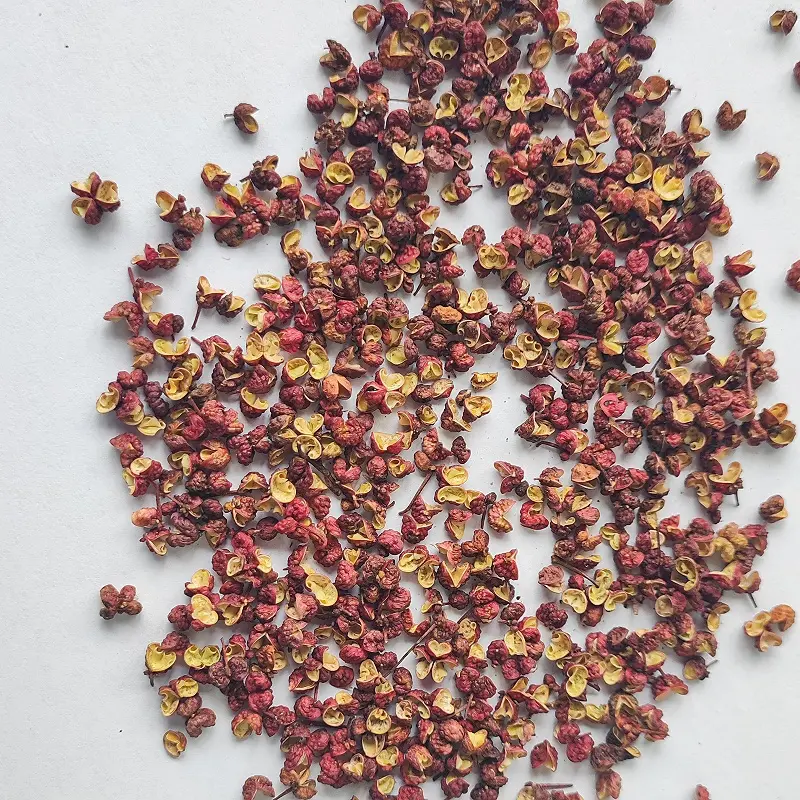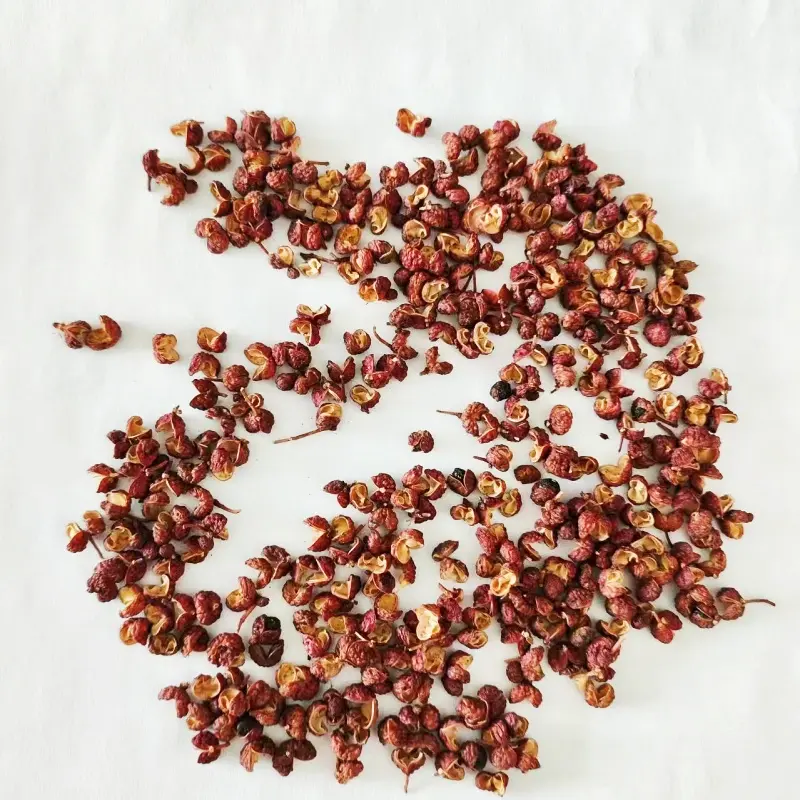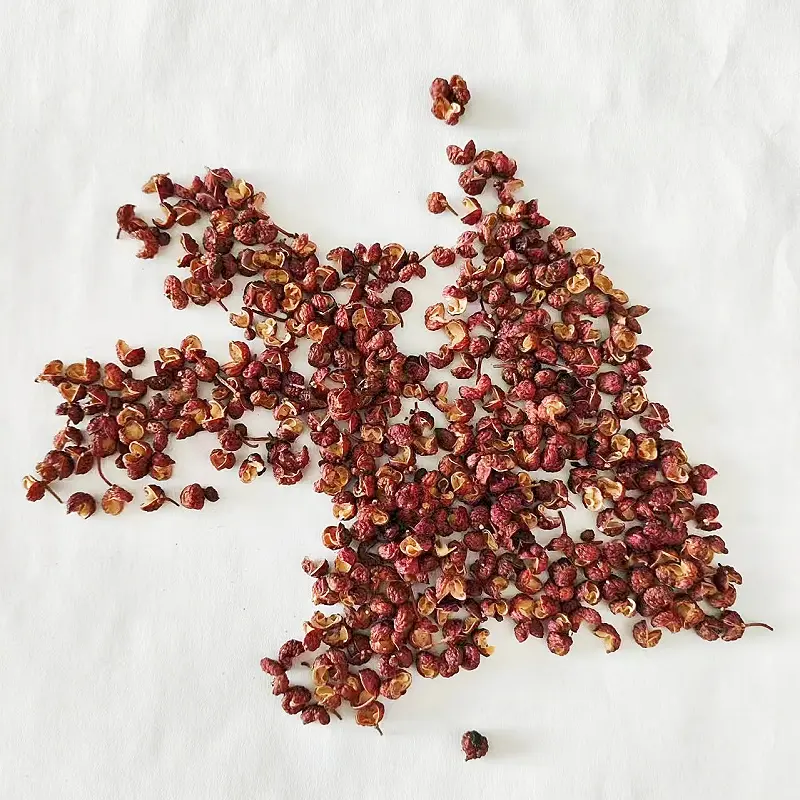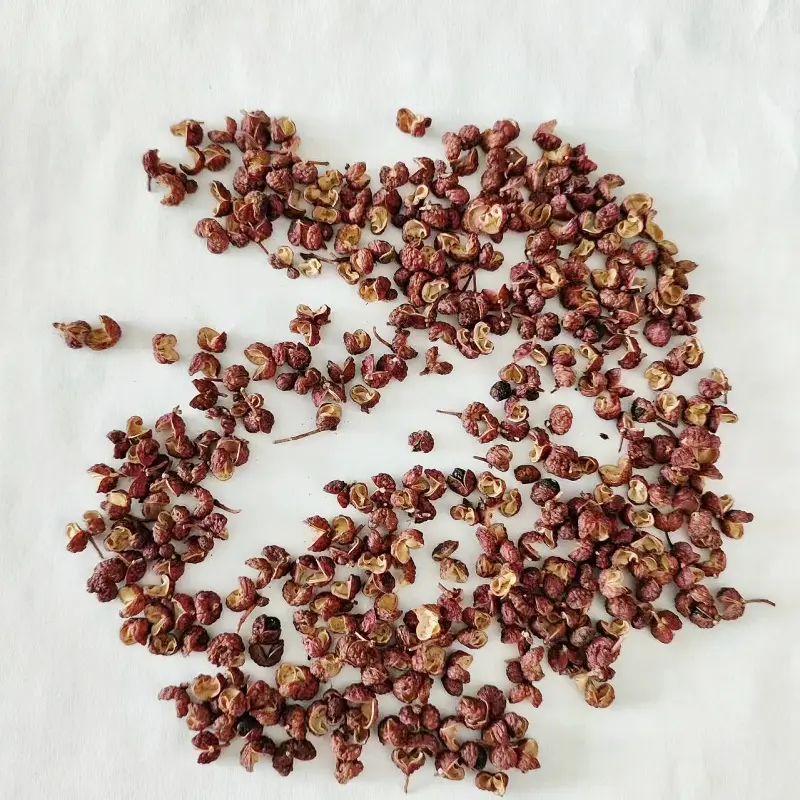Spices are more than flavor; they are science, culture, health, and trade. Among the many “peppercorns” in kitchens, Sichuan peppercorns (from Zanthoxylum species) and pink peppercorns (typically Schinus terebinthifolius or related species) are often confused. Yet they differ in botanical origin, chemistry, flavor, culinary use, safety, and market behavior. Below is a comparative look, enriched with data and research, and how a spice‐supplier like Manna Foods fits in.
Botanical Origins & Basic Definitions
| Feature | Sichuan Peppercorns (Zanthoxylum spp.) | Pink Peppercorns (Schinus spp.) |
|---|---|---|
| Family | Rutaceae (same family as citrus) | Anacardiaceae (related to cashews and pistachios) |
| Plant Parts Used | Dried pericarp (husk) of berries; inner seed often discarded | The dried fruit / berry, sometimes the leaves/twigs/leaves in essential oil studies |
| True “Peppercorn”? | No; not from Piper nigrum (black/white pepper) or chili peppers | Also “pepper” in name but not related to true pepper (Piper genus) |
Sichuan peppercorns (from Zanthoxylum plants) originate in Sichuan, China, while pink peppercorns come from Schinus molle/surinanus, native to South America. Weifang Manna Foods, a 2006-founded enterprise with FDA/HACCP, wholesales and processes Sichuan peppercorns, exporting to global markets.
Flavor, Sensation, and Chemistry
Sichuan Peppercorns
Sensory effects: Famous for málà flavor (spicy + numbing), though the spiciness comes from other spices, while Sichuan peppercorns give a tingling, buzzing / numbing sensation (“麻” ma) rather than pure heat.
Key chemical compounds:
Compound Role / Effect Approximate Range or Characteristic Hydroxy-α-sanshool Primary numbing / tingling agent Varies by species & processing; often 1.5-3% or so in good quality Z. bungeanum or Z. armatum samples Limonene, β-phellandrene, other terpenes Provide citrusy, floral, woody aroma Flavor profile differences by type:
Red Sichuan peppercorns: warmer, deeper, more aromatic, heavier flavor.
Green Sichuan peppercorns: harvested earlier, brighter, more citrusy; more volatile oils; often more pungent in aroma per weight.
Pink Peppercorns
Sensory effects: Fruity, floral, mild, not typically numbing in the Sichuan pepper style. Their taste is more subtle, aromatic, less “bite” than black pepper; sometimes used for color, garnish.
Key chemical / active compounds: From recent GC-MS studies and essential oil research:
Plant Part / Ripeness Major Volatile / EO Compounds Fruits (ripe) β-pinene (~43.34%), monoterpenes dominating (≈63.27%) Fruits (unripe) α-pinene, dl-limonene, ρ-cymene among dominants Leaves & Twigs Sesquiterpenes (e.g. germacrene D, caryophyllene) more prevalent in leaves and twigs Functional effects: Antioxidant, antimicrobial properties; potential to reduce cholesterol oxide formation when used in food processing (e.g. canned sardines) through migration of phenolic acids, flavonoids, etc.
Sichuan peppercorns (Zanthoxylum) have a numbing-spicy flavor from hydroxy-alpha sanshool, while pink ones offer fruity notes. Weifang Manna Foods, with FDA/HACCP, processes quality Sichuan peppercorns, exporting globally.
Nutritional Profiles & Health Implications
Here are comparative data, as far as available from literature, for both spice types:
| Nutrition / Health Feature | Sichuan Peppercorns | Pink Peppercorns |
|---|---|---|
| Macronutrients (per 100g, dried) | Approx. energy ~ 280-320 kcal; fat ~ 8-22 g; protein ~ 9-10 g; fiber ~ 30-35 g; carbohydrates making up the balance. | Data somewhat less comprehensive; one source gives ~370 kcal, fat ~8 g, protein ~7 g, fiber ~33 g, carbs ~69 g. |
| Micronutrients | Sichuan peppercorns: decent iron, calcium, magnesium in some sources; Vitamins A, C, E trace or modest depending on species. | Pink pepper: similarly has phenolics, flavonoids; antioxidant extracts; however basic nutritional content (vitamins, minerals) less well-documented in recent high-quality studies. |
| Health benefits / risks | • Antioxidant & anti-inflammatory effects; possible digestive benefits. • Unique numbing effect may stimulate saliva, gastric secretions. • Low in capsaicin, so less “burn” risk. • Potential concerns: pesticide residues or adulteration if sourcing/processing not well regulated. Manna Foods controls pesticide strictly, and holds FDA, HACCP, HALAL, etc. certifications. (More below.) | • Antioxidant, antimicrobial, possibly food-preservative use. • Reduction of cholesterol oxidation in processed foods. • Allergy risk: Since pink pepper is in the cashew/pistachio family, there is documented cross-sensitisation for people with cashew/pistachio allergies. |
Sichuan peppercorns (Zanthoxylum) have dietary fiber and minerals; pink ones shine with antioxidants, both aiding digestion. Weifang Manna Foods, a company with import-export rights, processes quality Sichuan peppercorns for global markets.
Allergy & Safety Considerations
Pink peppercorns allergenicity: A 2018 study in Journal of Allergy and Clinical Immunology found cross-sensitisation between pink peppercorn (Schinus terebinthifolius) and cashew/pistachio allergies. Persons allergic to cashews or pistachios may react to pink peppercorn.
Regulatory concerns: Some species of Schinus have been regulated in the past in certain countries for potential toxicity. Proper sourcing, identification, processing, and lab testing are critical.
Pesticide, chemical residue: For both spices, especially Sichuan peppercorns, pesticide control is important. Moisture content, color, uniformity, microbial contamination (E. coli, Salmonella) are trade & food safety issues. A specification sheet for ground Sichuan pepper powder from a supplier shows microbial limits like coliform < 100,000 cfu/g, Salmonella negative in 375 g, etc.
Weifang Manna Foods, with food production license & HACCP, ensures safe processing for global Sichuan peppercorn supply.
Market/Trade Data
These data help place demand and commercial importance in context. While statistics on Sichuan peppercorns are less easily centralized (being many species and less formal reporting), pink peppercorns have clearer international trade figures.
| Metric | Pink Peppercorns | Notes / Trend |
|---|---|---|
| Global import value (2023) | ≈ US$1.09 billion for HS Code 090411 (pepper, genus piper, neither crushed nor ground), of which pink peppercorn is a component. | However, this HS Code includes a broad set of “pepper” products; the pink pepper share is part of that. |
| U.S. import value (2023) | US$196.4 million, import volume ≈ 44,390 metric tons of pink peppercorns. | Major source: Vietnam (~78% share) followed by Indonesia, India etc. |
| Import trend (1-year) | Down: ~ -34.5% in value, -23.9% in volume for pink peppercorns into U.S. from previous year. | |
| Key exporters | Brazil, Vietnam, Indonesia etc. |
Demand for authentic Sichuan cuisine, spicy foods and "spicy + numbing" flavors is rising in the US, Japan, Europe and the Middle East. Weifang Manna Foods supplies quality Sichuan peppercorn, green and red Sichuan peppercorns to these regions.
Comparative Table: Sichuan vs. Pink Peppercorns
Here’s a direct comparison summary.
| Aspect | Sichuan Peppercorns | Pink Peppercorns |
|---|---|---|
| Botanical family | Rutaceae | Anacardiaceae |
| Numbing (“麻”, ma) sensation | Yes; hydroxy-α-sanshool is primary compound | No significant numbing; more aromatic/fruity/floral |
| Heat / Pungency | Mild (not capsaicin-based) but contributes to “balance” when used with chilis | Mild, subtle; heat is negligible |
| Flavor profile | Citrus, floral, woody, numbing, complex aftertaste; red vs green shows distinct differences | Fruity-sweet, floral, delicate, often used for color / garnish or aromatic lift |
| Common uses | Sichuan cooking (mapo tofu, hotpot, mala xiang guo etc.), spice blends, oils, marinades | Spice blends, garnishes, light dishes, sprinkled on salads, seafood; essential oil/extract for fragrance and preservative roles |
| Nutritional / functional | Strong in fiber, some minerals; unique bioactives; risk of residue if unregulated | Good antioxidant, antimicrobial; risk: allergic cross-reactivity; lesser data on macro/ micronutrients in commercial use |
| Allergen risk | Generally low (unless contaminated) | Higher for those allergic to tree nuts (cashew, pistachio) |
| Market trends | Growing demand globally; significant supply from China; premium product when processed under good practices | Also large exports/imports; but fluctuations; sensitive to safety & regulatory issues; somewhat niche compared to black/white pepper etc. |
Role of Quality & Processing: Manna Foods Case
Any manufacturer/supplier must manage multiple variables to deliver high-quality Sichuan pepper or pink peppercorn. Manna Foods is a good example of a company adhering to best practices. Key features include:
Own spices factory; ability to process according to customer needs.
Certifications: FDA, HACCP, HALAL; food production license; general taxpayer status; customs registration.
Processing equipment: stainless steel equipment; dedicated machinery for pepper cleaning, color sorting, vacuum packaging, strong demagnetisers, metal detectors etc. These ensure impurity removal, conforming to regulatory standards.
Pesticide control: Manna Foods enforces strict pesticide residue limits, which is particularly important for Sichuan pepper (given its origin and potential chemical treatments) and also for avoiding cross-contamination.
These capabilities breathe into the data shown above: where customers demand low microbial counts, clean appearance, proper aroma / potency, and safety (including allergen labeling etc.), such infrastructure matters.
We are a spice factory for custom processing, holds certifications like FDA, HACCP, HALAL, food production license and customs registration, uses stainless steel equipment (cleaners, color sorters, etc.) to remove impurities, and enforces strict pesticide control—all meeting clients’ demands for low microbes, safety and quality.
Research Data Highlights
Some of the recent scientific studies that help sharpen understanding:
Chemical Composition & Essential Oils
Studies on Schinus terebinthifolius show that the essential oils (EOs) of leaves, fruits, twigs have distinct profiles: fruits show high monoterpene content, with compounds like β-pinene (≈ 43.3%) being dominant. Leaves/twigs tend to have more sesquiterpenes like germacrene D, caryophyllene, etc.Functional / Health Effects
Pink pepper inclusion in sardine canning reduces formation of cholesterol oxidation products, likely due to its antioxidant compounds (phenolics, flavonoids, terpenes).
EO and other extracts show antimicrobial / antibacterial activity (e.g. against Staphylococcus aureus) in pink pepper fruit & leaves.
Allergenic Cross-Reactivity
As noted, for pink peppercorns, there is documented cross-sensitisation in persons allergic to cashew/pistachio. Despite no prior exposure, responses were observed in vitro. This suggests that for product labeling and consumer safety, suppliers and processors must be cautious.
Yield and Essential Oil Content
Fruit EOs from pink pepper (by mass) have much higher yield (~7.60% m/m) compared to leaves (~0.63%) or twigs (~0.12%) in one study.
Practical Implications for Buyers and Chefs
If you want numbing sensation (e.g. for Sichuan, Chongqing dishes), you need real Sichuan peppercorns (especially green or red varieties). Pink peppercorns will not substitute well for that effect.
For aromatic lift, color, delicate dishes or finishing, pink peppercorns offer a lighter, more floral note, and may be used in pepper mixes. But remember: allergen risk (if customers have nut allergies).
Storage matters: volatile oils degrade with heat, light, moisture. Red/green Sichuan peppercorns tend to lose aroma more quickly; green ones especially. Suppliers like Manna Foods use color sorters, vacuum packaging etc. to preserve quality.
Safety & labeling: Especially for pink peppercorns, it's prudent to label the tree-nut family relationship; for Sichuan peppercorns, to ensure pesticide residues, microbial safety are within limits.
Regulatory landscape: Some countries may have stricter food safety requirements; suppliers must comply with HACCP, FDA, EU import regulations etc. Certifications matter. Manna Foods has these certifications, which helps in export to US, EU, Japan etc.
Comparative Summaries
Below are tables bringing together key numbers for direct comparison.
Chemical / Volatile Compounds
| Spice | Major Compounds / Classes (volatile oils) | Dominant Compound(s) | Flavor/Aroma Implication |
|---|---|---|---|
| Sichuan Peppercorns | Terpenes (limonene, phellandrene, etc.), sanshool compounds | Hydroxy-α-sanshool; limonene; β-phellandrene; others depending on red vs green | Numbing / “buzz” + citrus/floral/woody aroma |
| Pink Peppercorns | Monoterpenes, sesquiterpenes, phenolics | β-pinene, α-pinene, dl-limonene, ρ-cymene; germacrene D etc. | Fruity, herbal, aromatic, mild, less pungent / no numbing effect |
Nutritional / Macro Composition (Where Data Exists)
| Per 100 g (dried) | Sichuan Peppercorns | Pink Peppercorns |
|---|---|---|
| Calories | ~280-320 kcal | ~370 kcal |
| Fat | ~8-22 g depending on sample / species | ~8 g |
| Protein | ~9-10 g | ~7 g |
| Carbohydrate | ~55-65 g (depending) | ~69 g |
| Fiber | ~30-35 g | ~33 g |
Trade / Import Data for Pink Peppercorns (Selected Countries)
| Importing Country | Import Value (2023) | Volume | Share of Source Country (if known) |
|---|---|---|---|
| United States | ~US$196.4 million | ~44,390 metric tons | ~78% from Vietnam |
| India | ~US$162.7 million | (volume not always exact in that source) | Various origins (including Vietnam, etc.) |
| U.A.E. | ~US$79.1 million | — | — |
Choosing / Using in Production & Wholesale
As a wholesaler or manufacturer like Manna Foods, decisions around which peppercorn to source, how to process, how to position, etc., depend on these factors:
Target market & culinary use
If your customers (restaurants, spice mix producers) want authentic Sichuan / Chinese hotpot / mala flavors, then high-quality Sichuan peppercorns (red and/or green) are essential.
If your customers are more into western or fusion cuisine, using pink peppercorns for decorative / aromatic value, you might supply blends or smaller volumes.
Quality control / processing
For Sichuan peppercorns: remove inner seed (bitter / gritty), ensure color consistency, remove foreign matter, control moisture to prevent mold/spoilage. In red ones, proper drying; in green ones, shade drying or special handling to preserve volatile compounds.
For pink peppercorns: ensure purity (no adulterants or mis-identification), test for allergen cross-reactivity if required; essential oil extraction may be an additional product line.
Certifications & safety
Certifications like FDA export compliance, HACCP, HALAL, etc., are key. Manna Foods holds such certifications.
For pink peppercorns, allergen labeling, traceability from farm to processing is more important because of cashew/pistachio allergen cross-sensitisation.
Pesticide residue testing is critical. Buyers often demand strict maximum residue limits (MRLs), microbial safety (absence of Salmonella, low coliform/E. coli) etc.
Packaging and shelf life
For both types, volatile oils degrade with exposure to light, oxygen, heat. Vacuum packaging, inert atmospheres, using stainless steel processing/equipment (which Manna has), color sorters etc., all help preserve flavor and color.
Shelf life depends; green Sichuan peppercorns degrade faster; red ones last longer. Pink peppercorns likewise need to be stored well.
Pricing & supply chain
Sichuan peppercorn supply is largely in China (provinces like Sichuan, Yunnan, etc.). Seasonal yields, climate, transportation, etc., affect pricing.
Pink peppercorns come from Brazil, Vietnam, etc. Fluctuations in export policy, currency, quality, contamination / safety issues can affect trade volumes and price. For example, the U.S. import of pink peppercorns fell year-over-year in 2023 in value and volume (≈ -34.5% value, -23.9% volume) according to recent data.
When One Substitutes (and What the Trade-Offs Are)
Sometimes people try to substitute pink peppercorns for Sichuan peppercorns (or vice versa), especially when supply is limited, or to reduce cost. Here are trade-offs:
| If you substitute pink peppercorn instead of Sichuan peppercorn | If substitute Sichuan peppercorn instead of pink peppercorn |
|---|---|
| Lose the numbing “ma” effect; the dish will feel less authentic in styles that require that. | Might overpower delicate flavor; risk of “buzz” or numbing not desired; color / aroma difference obvious. |
| Allergic risk greater; some customers may notice different aroma/taste profile. | Sichuan may be more expensive / require more expensive processing/certification; more intensive processing (husk removal, etc.). |
| Better visual appeal / mild flavor in dishes where heat or numbness are not primary. | Benefit where other spices provide heat; but stray usage might be too strong or unsettling to palates unaccustomed. |
Recommended Best Practices & How Manna Foods Meets Them
To ensure that the difference in quality between Sichuan peppercorns and pink peppercorns is meaningful and safe, here are best practices—many of which Manna Foods follows:
Traceability: Knowing the origin (province, farm), species / variety (Z. bungeanum red, Z. armatum green, etc.), growing practices (organic vs conventional), pesticide use.
Processing hygiene:
Cleaning, removal of stems/seeds/foreign material.
Using stainless steel equipment, demagnetizers, metal detectors to avoid metal contaminants.
Color sorters to ensure uniform shell color for consumer appeal.
Certifications: FDA, HACCP, HALAL, ISO etc. Buyers in US, EU, Japan often require these. Manna Foods has all those certifications.
Testing:
Microbial safety (Salmonella, E. coli), chemical residues (pesticides), moisture content.
For pink peppercorns: also allergen tests / cross-reactivity studies or at least warnings.
Packaging & storage:
Use of vacuum / inert gas, moisture control, dark / opaque packaging, cool storage.
For green Sichuan peppercorns, extra care to preserve volatile oils.
Customer education and labeling:
Labels specifying variety (red/green, species), origin, net weight, certifications, pesticide residue levels, allergen information.
Recommended storage, usage (whole vs ground), suggestions of ratio if combining with other spices.
Conclusion
Which is “better” depends on the purpose. For strong, authentic Sichuan cuisine where flavor and numbing effect matter, real Sichuan peppercorns are irreplaceable. For lighter flavor, color effects, or aroma, pink peppercorn adds a nice dimension.
Trends show increasing global demand for authentic spices, more regulatory scrutiny, more attention to safety and origin. For pink peppercorns, allergen issues may become more visible; for Sichuan peppercorns, preserving volatile oil content and minimizing residues will be critical.
For suppliers like Manna Foods, the combination of vertical control (own factory), good equipment, international certifications, strict pesticide control and flexible processing (customer-tailored) positions them well to meet both Sichuan and pink peppercorn market demands.
If you need high-quality Sichuan green and red peppercorns and authentic Sichuan peppercorn products, look no further than Weifang Miner Foods – customized in our own factories and backed by multiple certifications. Contact us now to start worry-free global purchasing!
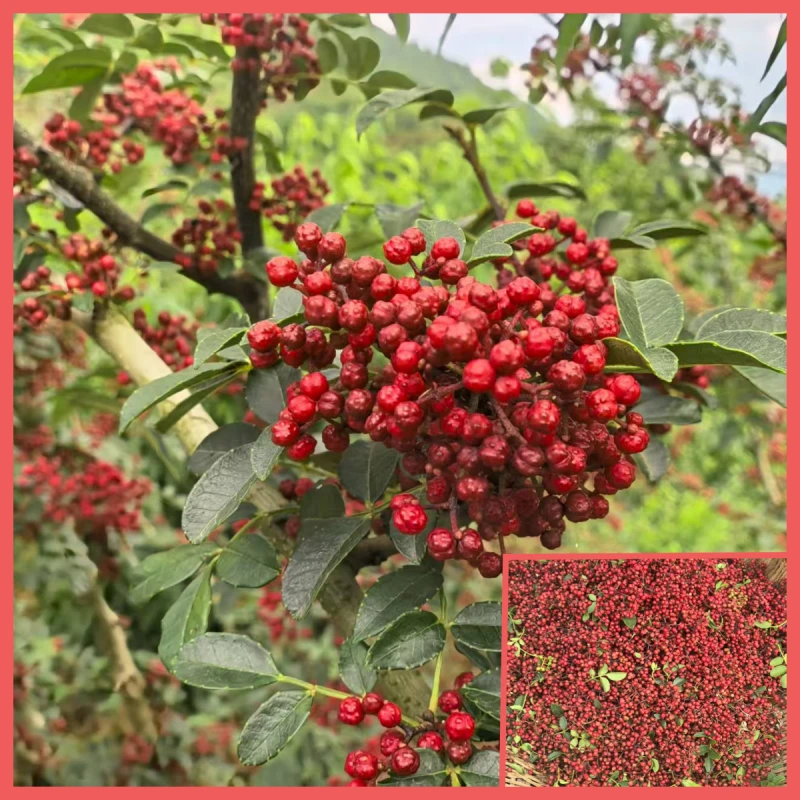
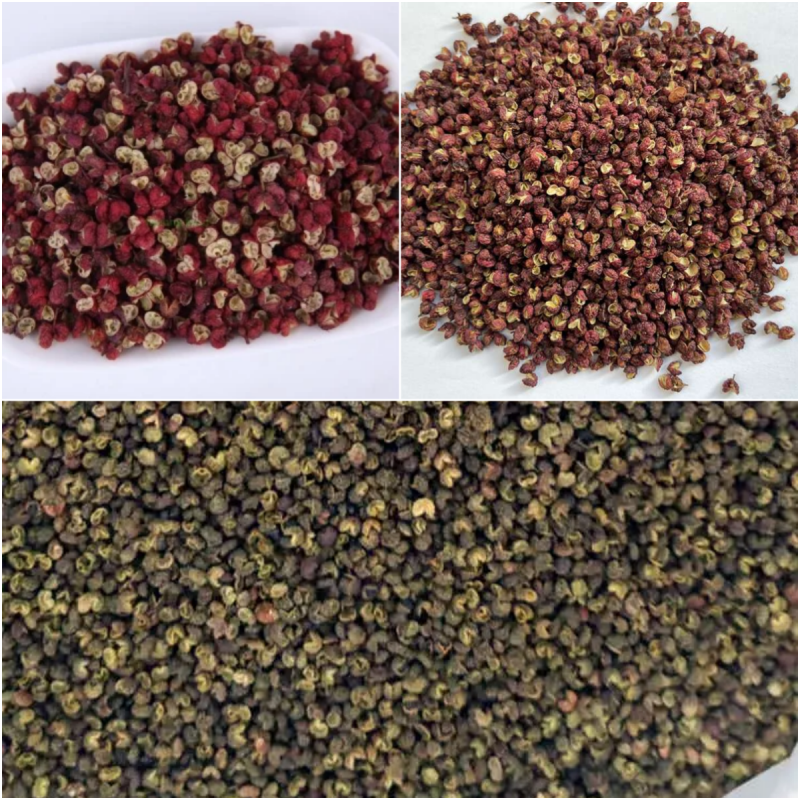
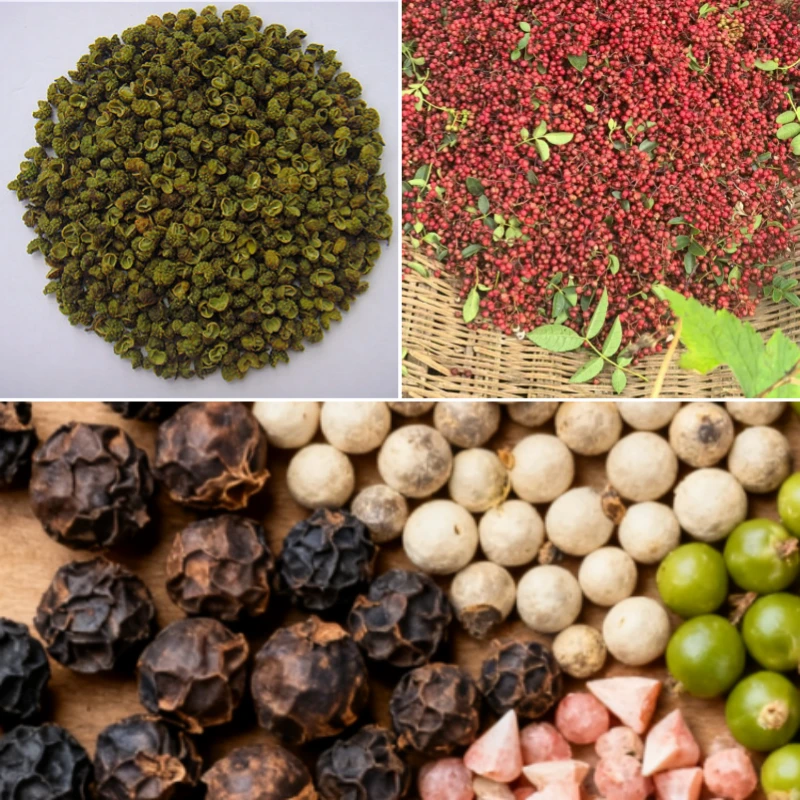
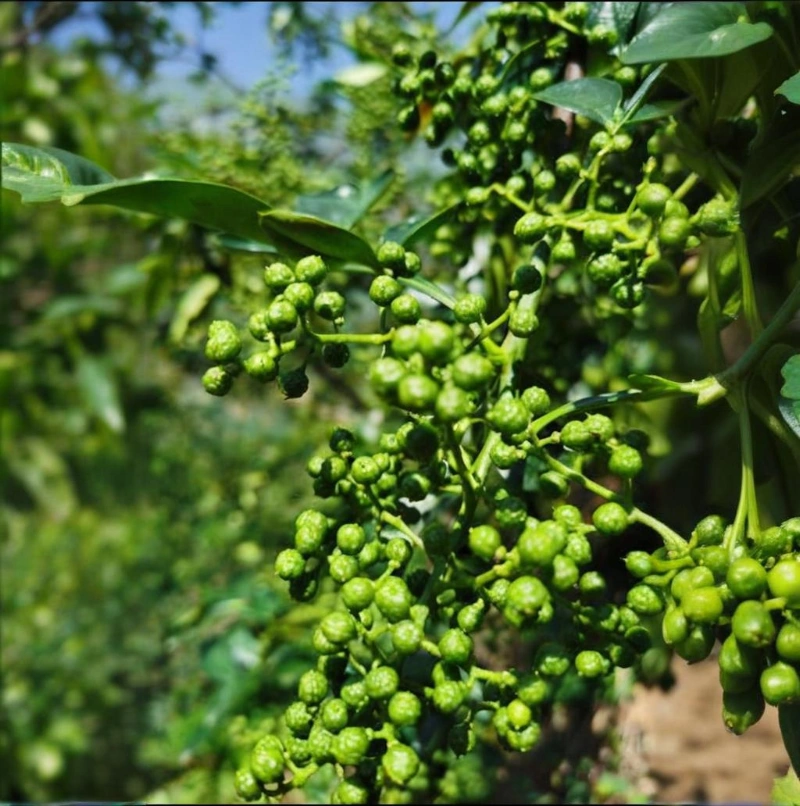
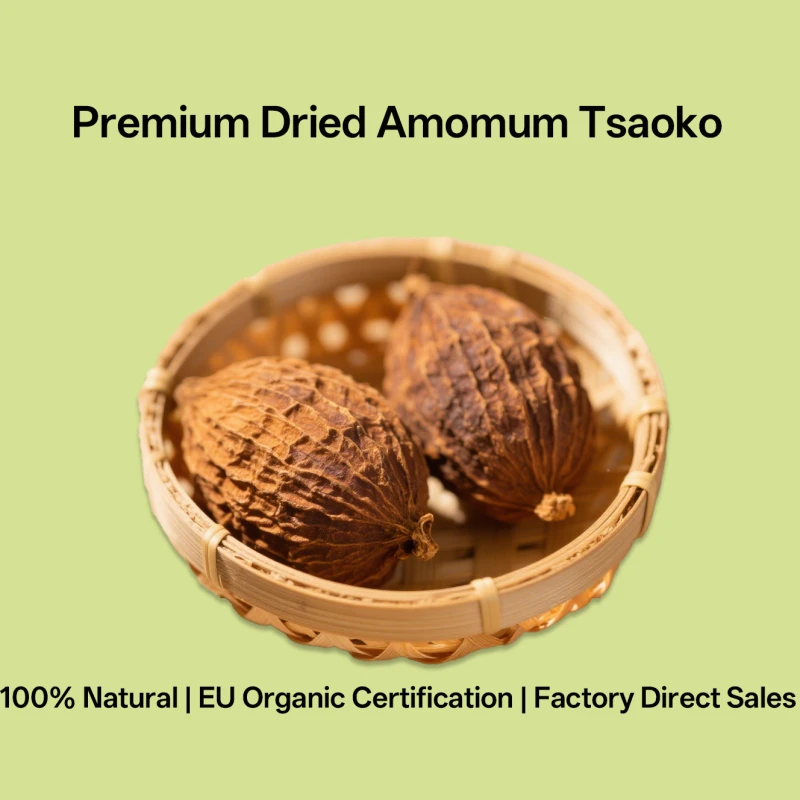
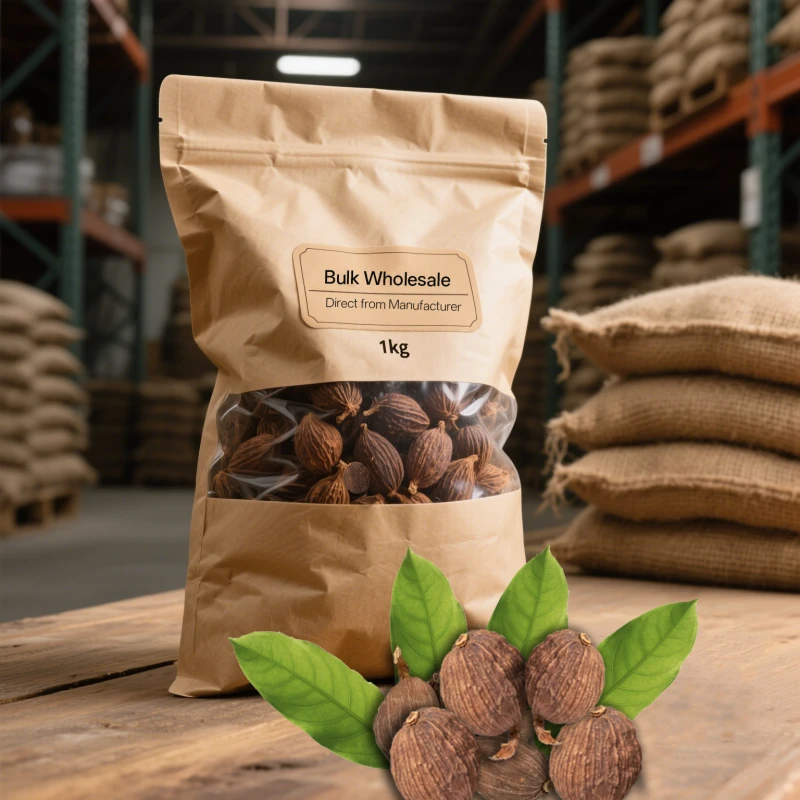
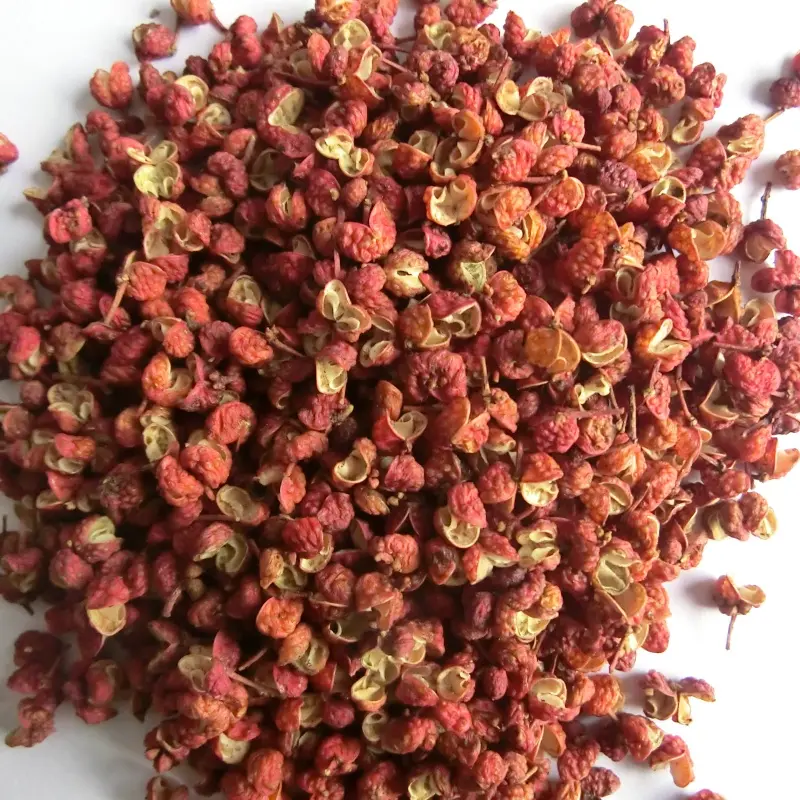
811.webp)
